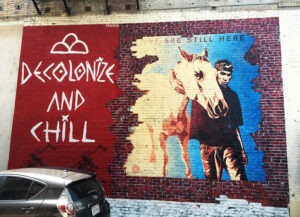May 13, 2015;AlterNet
NPQ has written fairly extensively about the effect of large nonprofits on the tax bases of communities. This piece written by Zaid Jilani for AlterNet asserts that the vague financial relationship between a university like Syracuse and its surrounding community can exacerbate poverty in those surrounding communities.
While universities like Syracuse drive economic development and attract businesses to their region, the towns surrounding the campus often contain high levels of poverty. This poverty, according to Jilani, stems from the large number of university buildings exempted from property taxes. Without this critical revenue source, the towns struggle to fund essential public services used by university employees as well as residents not employed by the university.
In the case of Syracuse, as of 2011 a full 51 percent of its property was not taxable because it is owned by nonprofits, the city, and the state. The two nonprofits with the biggest portion of that are the University and Saint Joseph’s Hospital Health Center.
Syracuse University is a private research university with enrollment of 21,400. It is one of the flagship universities of New York State, containing thirteen colleges including business administration, public administration, and engineering. It has a rich history dating back to the 1870s as well as an endowment of $1,183 billion; it charges its students tuition and fees of over $41,000 annually.
Sign up for our free newsletters
Subscribe to NPQ's newsletters to have our top stories delivered directly to your inbox.
By signing up, you agree to our privacy policy and terms of use, and to receive messages from NPQ and our partners.
Sadly, it is an oasis of wealth in its community. The city of Syracuse is the 23rd most impoverished city in America, according to data released last year by the U.S. Census Bureau. One-third of the city’s residents, or 48,000 people, live on incomes of less than $23,500 for a family of four. Symbols of poverty are not hard to find, from the boarded-up homes to the public services that struggle to respond to the area’s severe winters.
Although university workers tend to receive higher salaries, these resources may not trickle down to the entire community. Some towns with universities struggle with limited funding for schools and other public services because the main employer is exempt from paying property taxes. Property taxes are the main source of revenue for elementary schools, streets, and public services, but nonprofits and government agency buildings are not taxable. As schools and other public services suffer from lack of resources, more and more families leave the university town and move to surrounding communities. The families that remain are often those most requiring the services the town is unable to fully fund.
Additionally, the city is forced to depend on the taxes it receives from the smaller amount of land that is taxable. These businesses and residents subsidize the university by providing the services the university system uses. These circumstances increase the divide between rich and poor.
The 2014 Census report compares 575 of the largest cities in the country, including several cities like Syracuse. While Syracuse’s position did improve from the year before, when it ranked fourth with a poverty rate of 38.2 percent, it remained within the bottom fifteen. Syracuse’s company includes cities like Bloomington, Indiana, and Gainesville, Florida, which also contain universities.
The city of New Haven, Connecticut, is trying to utilize Yale’s university system to bridge its divide. Yale is the second-richest university in the country, as measured by its endowment of $23.9 billion. Yet the divide between those in the New Haven community living in poverty and its wealthy increased by twenty percent between 2006 and 2012 and is one of the largest in the country. The community is building a retail district to employ those with few skills, connected to an expanded university research and technology area. Additionally, it is targeting resources to its low-income students including offering summer employment and technical training in its high schools.
The theme throughout all of these cities and the country as a whole is the loss of manufacturing jobs that provide good-paying employment to individuals without advanced degrees. Society cannot substitute these opportunities with university employment without providing education and other services to upgrade the skills of these workers. The rate of inequality in this country continues to rise, and university communities stand as symbols of this divide.—Gayle Nelson













